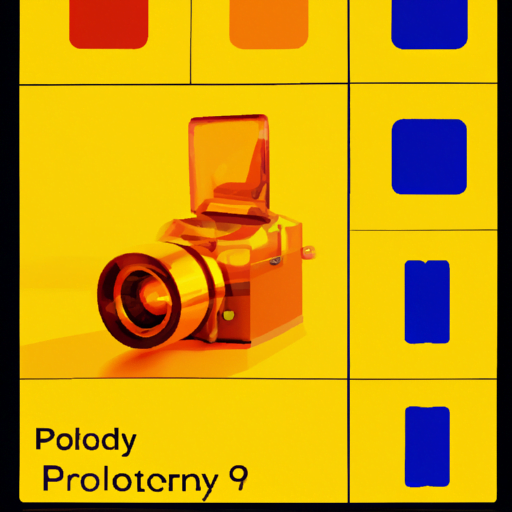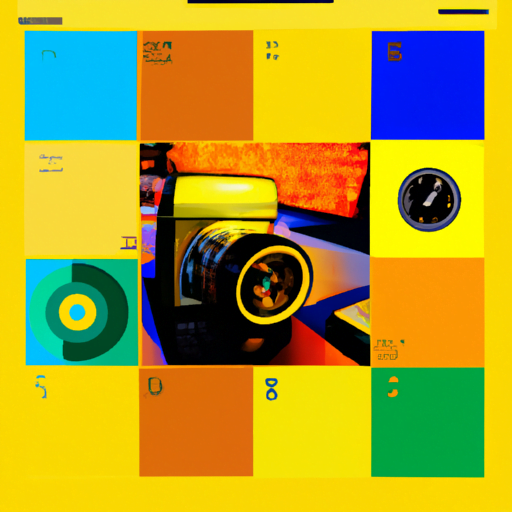
-
Table of Contents
- Interface Design for Productivity Apps
- The Importance of Interface Design
- Key Principles of Interface Design for Productivity Apps
- Best Practices for Interface Design in Productivity Apps
- 1. Clear and Hierarchical Information Architecture
- 2. Minimalistic and Consistent Visual Design
- 3. Thoughtful Use of White Space
- 4. Clear and Actionable Feedback
- 5. Contextual and Non-Intrusive Notifications
- 6. Seamless Integration with Other Tools and Services
- Case Study: Todoist
- Conclusion
Interface Design for Productivity Apps

Productivity apps have become an essential part of our daily lives, helping us manage tasks, stay organized, and maximize our efficiency. However, the success of these apps heavily relies on their interface design. A well-designed interface can significantly enhance user experience and boost productivity. In this article, we will explore the key principles and best practices for interface design in productivity apps.
The Importance of Interface Design
Interface design plays a crucial role in determining the usability and effectiveness of productivity apps. A poorly designed interface can lead to frustration, confusion, and ultimately, user abandonment. On the other hand, a well-designed interface can streamline workflows, reduce cognitive load, and improve overall user satisfaction.
According to a study conducted by the Nielsen Norman Group, a leading user experience research firm, a well-designed user interface can increase productivity by up to 200%. This highlights the significant impact that interface design can have on the efficiency and effectiveness of productivity apps.
Key Principles of Interface Design for Productivity Apps
When designing interfaces for productivity apps, it is essential to keep the following principles in mind:
- Simplicity: Keep the interface clean and clutter-free. Avoid overwhelming users with too many options or features. Focus on the core functionalities and prioritize them based on user needs.
- Consistency: Maintain consistency in terms of visual elements, interaction patterns, and terminology throughout the app. This helps users develop a mental model of the app and reduces cognitive load.
- Intuitiveness: Design the interface in a way that users can easily understand and navigate without the need for extensive tutorials or instructions. Use familiar metaphors and visual cues to guide users.
- Efficiency: Optimize the interface for speed and efficiency. Minimize the number of steps required to complete tasks and provide shortcuts or automation features whenever possible.
- Accessibility: Ensure that the interface is accessible to users with disabilities. Follow accessibility guidelines and provide options for customization, such as font size adjustment and color contrast settings.
Best Practices for Interface Design in Productivity Apps
Now that we understand the key principles, let’s explore some best practices for interface design in productivity apps:
1. Clear and Hierarchical Information Architecture
A well-organized information architecture is crucial for productivity apps. Users should be able to find information quickly and easily. Use clear and concise labels, headings, and categories to structure the content. Implement a hierarchical navigation system that allows users to drill down into specific sections or tasks.
2. Minimalistic and Consistent Visual Design
Adopt a minimalistic visual design approach to reduce visual clutter and distractions. Use a consistent color scheme, typography, and iconography throughout the app. Consistency in visual design helps users recognize patterns and establish familiarity with the interface.
3. Thoughtful Use of White Space
White space, or negative space, is the empty space between elements in a design. It helps create a sense of balance, improves readability, and enhances visual hierarchy. Use white space strategically to separate different sections, highlight important elements, and provide breathing room for users.
4. Clear and Actionable Feedback
Provide clear and immediate feedback to users when they perform actions or interact with the app. Use visual cues, such as animations or progress indicators, to indicate that a task is in progress. Display success or error messages to inform users about the outcome of their actions.
5. Contextual and Non-Intrusive Notifications
Notifications can be powerful tools for keeping users informed and engaged. However, they should be used judiciously to avoid overwhelming users. Provide contextual notifications that are relevant to the user’s current context or task. Allow users to customize notification settings to suit their preferences.
6. Seamless Integration with Other Tools and Services
Productivity apps often need to integrate with other tools and services to provide a comprehensive solution. Design the interface in a way that seamlessly integrates with popular tools and services, such as calendars, email clients, and project management platforms. This allows users to leverage existing workflows and reduces the need for manual data entry or switching between multiple apps.
Case Study: Todoist
Todoist is a popular productivity app that exemplifies many of the best practices mentioned above. Its interface is clean, intuitive, and focused on simplicity. The app follows a minimalistic visual design with consistent typography and iconography.
Todoist’s information architecture is hierarchical, allowing users to organize tasks into projects and sub-projects. The app provides clear and actionable feedback through visual cues, such as color changes and animations, when tasks are completed or rescheduled.
Furthermore, Todoist seamlessly integrates with other tools and services, such as Google Calendar and Slack, allowing users to sync tasks and collaborate with ease. This integration enhances the app’s functionality and improves overall user productivity.
Conclusion
Interface design plays a critical role in the success of productivity apps. By following the key principles and best practices discussed in this article, designers can create interfaces that enhance user experience, streamline workflows, and boost productivity.
Remember to keep the interface simple, consistent, and intuitive. Prioritize efficiency and accessibility, and provide clear feedback and contextual notifications. Seamless integration with other tools and services can further enhance the app’s functionality.
By focusing on interface design, productivity apps can become indispensable tools that help users stay organized, manage tasks effectively, and achieve their goals.
